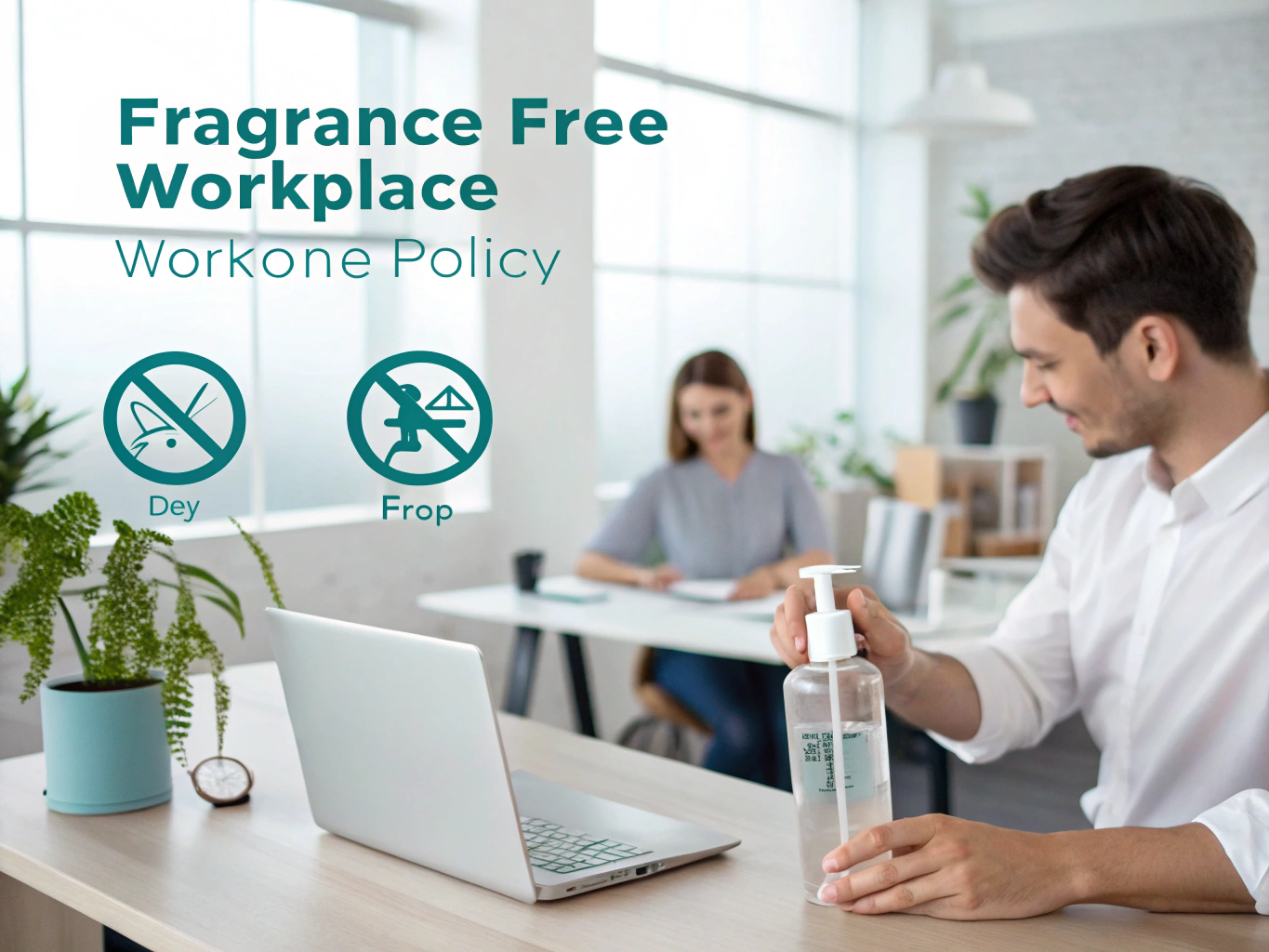Definition
A Fragrance-Free Workplace Policy is a set of guidelines designed to minimize or eliminate the use of scented products in the workplace. This policy aims to create a comfortable and safe environment for all employees, especially those who may have sensitivities or allergies to fragrances. By promoting a fragrance-free atmosphere, organizations show their commitment to health, inclusivity, and employee well-being.
Key Components
Understanding the essential elements of a Fragrance-Free Workplace Policy can help you create a more inclusive and safe environment. Here are some key components to consider:
- Scope of the Policy: This policy applies to everyone in the workplace, including employees, contractors, visitors, and even clients. It’s essential to set clear expectations about where the policy applies, such as offices, meeting rooms, and common areas.
- Guidelines for Scented Products: Encourage employees to avoid using heavily scented products like perfumes, colognes, and scented lotions. For example, an employee might choose a fragrance-free deodorant to comply with the policy while still feeling fresh.
- Notification for Exceptions: If someone needs to use a scented product for medical reasons, they should inform their supervisor and colleagues in advance. This proactive communication helps everyone adjust and accommodates individual needs.
- Enforcement and Support: Managers are responsible for implementing and enforcing the policy. They should be approachable and ready to support employees who may experience adverse reactions to scents.
- Education and Awareness: Providing training sessions about the importance of a fragrance-free environment can help employees understand the potential health risks associated with fragrances, fostering a culture of respect and care.
Importance in the Workplace
Why does a Fragrance-Free Workplace Policy matter? Imagine you’re in a meeting, and a colleague walks in with a strong perfume. Suddenly, you find it hard to concentrate, and another co-worker starts feeling dizzy. This scenario is more common than you might think! Fragrances can trigger allergic reactions, headaches, or respiratory issues in some individuals, which can lead to decreased productivity and discomfort.
Implementing this policy not only shows that your organization values health and safety but also fosters inclusivity. By ensuring a fragrance-free environment, you’re demonstrating that you care about the well-being of all employees, including those with sensitivities. This can lead to higher morale and job satisfaction, which ultimately benefits the entire team.
Best Practices
Implementing a Fragrance-Free Workplace Policy can be straightforward and effective if you follow these best practices:
- Communicate Clearly: When introducing the policy, make sure to communicate it clearly to all employees. Use multiple channels like emails, meetings, and posters to ensure everyone understands the guidelines and the reasons behind them.
- Lead by Example: Encourage leadership and management to adhere to the fragrance-free policy first. When employees see their managers taking the policy seriously, they are more likely to follow suit.
- Provide Alternatives: Consider offering fragrance-free products in the workplace, such as lotions or cleaning supplies. This way, employees have access to safe options that align with the policy.
- Encourage Feedback: Create a safe space for employees to provide feedback about the policy. Regular check-ins can help you fine-tune the guidelines and address any concerns that arise.
- Review and Revise Regularly: Make it a point to review the policy periodically. As workplace dynamics change, so too should your policies. Keep everyone informed of any updates to ensure continued compliance and understanding.
Legal Considerations
When developing a Fragrance-Free Workplace Policy, it’s essential to consider any legal aspects that may apply. In some jurisdictions, there are regulations regarding workplace safety and health that may encompass air quality and employee well-being. Ensure compliance with relevant laws, such as the Americans with Disabilities Act (ADA) in the U.S., which may require reasonable accommodations for employees with medical conditions affected by fragrances.
Consulting with legal or HR professionals can help you navigate these complexities and ensure your policy aligns with current regulations while still being considerate of all employees’ needs.
Conclusion
In summary, understanding and implementing a Fragrance-Free Workplace Policy is vital for creating a healthier, more inclusive environment for everyone. By prioritizing the well-being of your team, you not only enhance employee satisfaction but also ensure that your workplace is a space where everyone can thrive. Remember, a little consideration goes a long way, so together, let’s make our workplaces welcoming and comfortable for all!




